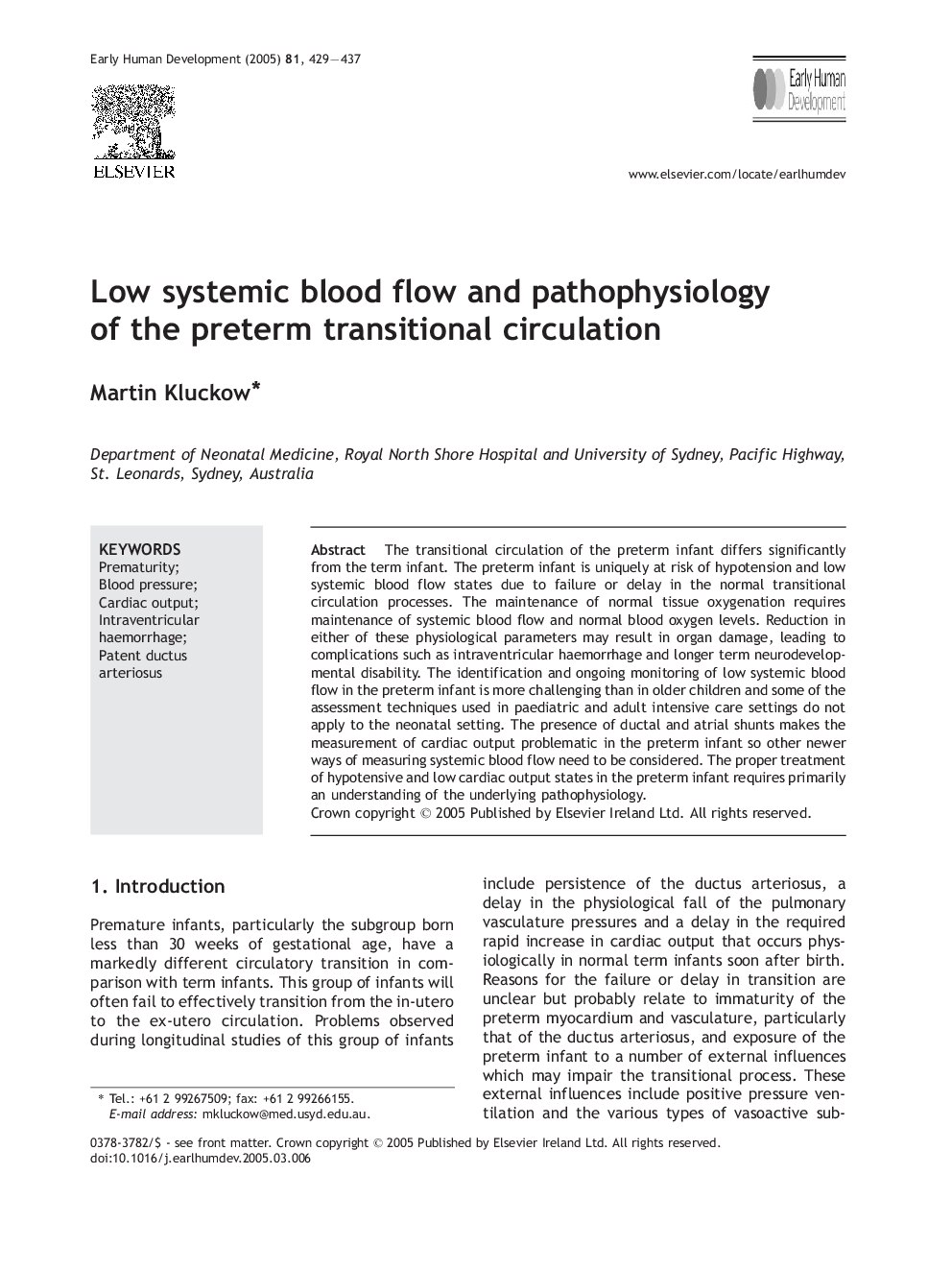| Article ID | Journal | Published Year | Pages | File Type |
|---|---|---|---|---|
| 9318630 | Early Human Development | 2005 | 9 Pages |
Abstract
The transitional circulation of the preterm infant differs significantly from the term infant. The preterm infant is uniquely at risk of hypotension and low systemic blood flow states due to failure or delay in the normal transitional circulation processes. The maintenance of normal tissue oxygenation requires maintenance of systemic blood flow and normal blood oxygen levels. Reduction in either of these physiological parameters may result in organ damage, leading to complications such as intraventricular haemorrhage and longer term neurodevelopmental disability. The identification and ongoing monitoring of low systemic blood flow in the preterm infant is more challenging than in older children and some of the assessment techniques used in paediatric and adult intensive care settings do not apply to the neonatal setting. The presence of ductal and atrial shunts makes the measurement of cardiac output problematic in the preterm infant so other newer ways of measuring systemic blood flow need to be considered. The proper treatment of hypotensive and low cardiac output states in the preterm infant requires primarily an understanding of the underlying pathophysiology.
Keywords
Related Topics
Health Sciences
Medicine and Dentistry
Obstetrics, Gynecology and Women's Health
Authors
Martin Kluckow,
